Top Wing Foil Boards of 2021: Comprehensive Guide

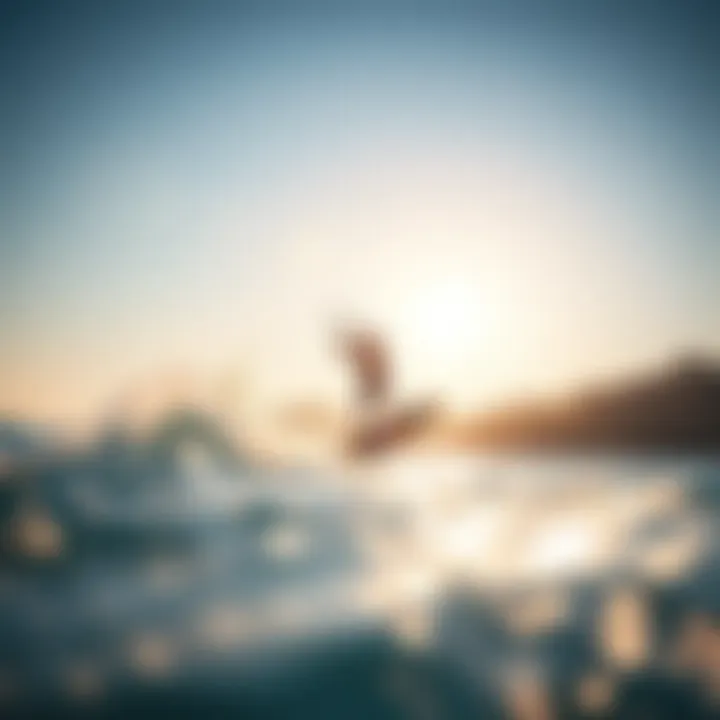
Intro
In the ever-evolving world of water sports, wing foiling has carved out its own niche. It combines elements of kite surfing, windsurfing, and foiling to create a unique riding experience on the water. As it continues gaining popularity, enthusiasts find themselves faced with an array of choices, particularly when it comes to selecting the right wing foil board.
With 2021 bringing a wave of innovation in design and technology, this article serves as a deep dive into the best boards available, outlining what sets them apart and how they cater to both novices and seasoned riders. We wink at the intricacies of performance characteristics, design features, and material quality that can revolutionize your time on the water.
Whether you are a kiteboarding instructor looking to equip your clients with the best gear, or a weekend warrior trying to up your game, understanding the nuances of these boards is crucial. Here, we set the stage to equip you with insights that go beyond surface-level knowledge, helping you make informed decisions as you journey into the dynamic realm of wing foiling.
Gear Selection
Selecting the right gear is like picking the perfect tool for a craftsman; it can make all the difference in your water rides. When it comes to wing foiling, two primary components require thorough consideration: the type of kite you pair it with and, more crucially, the board itself.
Types of Kites
Kites come in various shapes and sizes, each suited for different conditions and skill levels. Here’s a brief look:
- Ram air kites: Often favored for their stability and ease of use, these kites are great for beginners.
- Foil kites: More advanced riders often lean toward foil kites for their efficiency and performance in lighter winds.
- Leading edge inflatable kites: These are versatile and can excel in many conditions, making them a popular choice for a range of skill levels.
Choosing your kite smartly directly influences your overall experience on the water. Make sure to also consider the wind conditions and your individual style when making your selection.
Choosing the Right Board
When it boils down to boards, the right choice hinges on various factors:
- Size and Volume: Larger boards typically offer more buoyancy and stability, crucial for beginners. Conversely, smaller boards can provide quicker maneuverability, appealing to advanced riders.
- Material Composition: The durability and weight of the board play significant roles. Boards made from high-density polyethylene tend to be more resilient while being lightweight.
- Design Features: This includes the tail shape, rocker line, and wow factor of graphics on the board. A board that fits snugly with your style will enhance your experience while on the water.
In selecting your board, it’s important to factor in your skill level, riding style, and the conditions you expect to encounter. Every bit counts when piecing together your rig for optimal performance.
Remember, making an informed choice about your gear can elevate your wing foiling experience significantly.
Skill Development
Wing foiling, while thrilling, can be challenging—especially for those just starting out. Developing your skill set is key to mastering this sport.
Essential Techniques
There are a couple of fundamental techniques that stand out:
- Proper stance: Keep your feet shoulder-width apart on the board and maintain a low center of gravity.
- Weight distribution: Shift your weight forward during takeoff to help with lift and balance.
These techniques lay the groundwork for a more enjoyable and effortless experience on the water.
Progression Tips
As you grow more comfortable, consider the following tips:
- Practice in lighter winds: Starting in manageable conditions builds confidence.
- Watch others: Observing experienced riders can provide insights into techniques and tricks.
Over time, as you practice and hone these techniques, you’ll find yourself tackling more complex maneuvers and enjoying the rush of wing foiling with greater gusto.
For more resources and insights, visit these pages: KiteForum, Wikipedia on Foiling.
Prolusion to Wing Foiling
Wing foiling has become a rising star in the water sports scene, drawing in a mix of thrill-seekers, water enthusiasts, and those simply looking to enjoy the ocean in a novel way. This fairly new sport captures the essence of several activities, merging aspects of windsurfing, kitesurfing, and traditional surfing. The unique combination offers a thrilling experience where riders can glide over water with relative ease compared to other board sports.
The allure of wing foiling lies in its accessibility. Unlike traditional kiteboarding or windsurfing, it requires less specialized wind conditions and is often considered easier to master for newcomers. Riders can enjoy flexibility and maneuverability, getting off the beach without needing complicated setups. Simply grab a wing foil board, hit the water, and you’re off.
When discussing the best wing foil boards of 2021, it’s crucial to understand how the evolution of this sport has led to extensive design innovations. Manufacturers have honed in on various aspects such as material strength, board shape, and volume optimization to cater to different riders, whether they are seasoned pros or mere novices.
Moreover, the growing popularity of wing foiling fosters a sense of community. Riders often share tips and experiences on forums like Reddit and Facebook groups, helping each other out as they learn the ropes together. This communal aspect bolsters more than just the sport—it encourages shared knowledge and bolsters camaraderie, contributing to a rich narrative around wing foiling.
In summary, wing foiling is not just another watersport; it’s an exciting, versatile activity that fosters engagement and learning among its practitioners. Understanding its nuances and the best equipment available, particularly the boards tailored for different riders, is pivotal for making informed decisions in this exhilarating domain. Thus, let’s dive deeper into what makes wing foil boards special and what to consider when picking the right one.
Evolution of Wing Foiling
The world of water sports constantly evolves, shaped by innovations that push the boundaries of what's possible on the water. Wing foiling, or wing surfing, is no exception to this rule. Over the past few years, it has emerged from niche beginnings to capture the attention of both casual enthusiasts and seasoned professionals. Understanding the evolution of wing foiling is not just about tracing its history; it's key in appreciating its technical advancements and the way it has changed the dynamics of riding.
Wing foiling first hit the scene around the late 2010s. Riders began experimenting by combining elements from other sports like kiteboarding and windsurfing. The first wings were rudimentary, often resembling oversized kites without the stability and control riders enjoy today. As boards and wings underwent refinements, the sport quickly gained a dedicated following, each rider eager to find that perfect balance of lift and glide.
Key Contributions to the Evolution
Several critical elements acted as catalysts in the growth of wing foiling:
- Improved Design: The shapes and sizes of wings evolved significantly. Earlier models were cumbersome; modern iterations are streamlined and built for efficiency. These changes allow better control and adaptability to varying wind conditions.
- Material Advancements: Innovations in materials also paved the way for lighter and more durable wings and boards. Manufacturers began utilizing advanced composites, enhancing performance without sacrificing durability.
- Customization: As the sport gained traction, so did the demand for personalized setups. Riders now enjoy a variety of wing sizes, shapes, and board types that match their skill levels and preferred riding styles.
The benefits of this evolution extend beyond merely facilitating better rides. Wing foiling has democratized access to water sports. Today, anyone from a weekend warrior to experienced kiteboarders can dive in and enjoy the thrill of riding with a minimal learning curve.
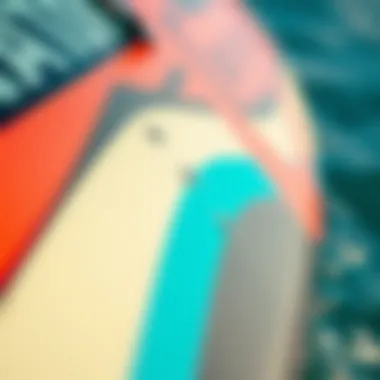
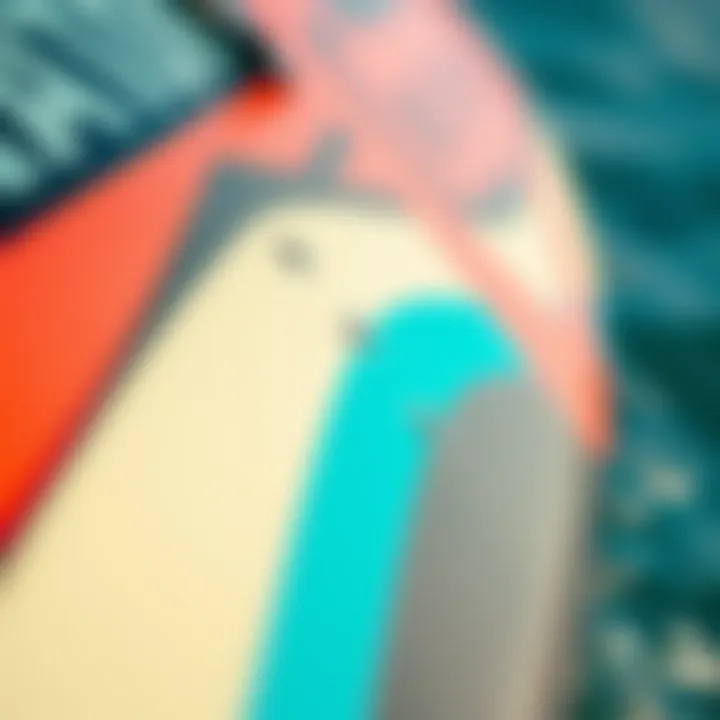
Broader Implications and Considerations
The evolution of wing foiling also reflects larger trends in recreational sports. Increased accessibility encourages a diverse range of riders to participate, thus fostering a vibrant community. As the conversation around water sports shifts towards sustainability, manufacturers face the challenge and opportunity to create products not only that excel in performance but also tread lightly on the environment.
"The evolution of wing foiling mirrors a broader culture shift in outdoor sports: balancing performance with sustainability and accessibility, creating a community that welcomes everyone."
As we navigate forward, understanding how wing foiling progressed provides insights into its future. With technology racing ahead, expect more innovations that will undoubtedly shape the sport further. The landscape is ripe for growth, and staking a claim in this exciting evolution ensures every rider finds their own ideal experience on the water.
Understanding Wing Foil Boards
In the realm of watersports, wing foiling has made a significant splash, blending techniques from windsurfing and kitesurfing while introducing its own distinct flair. An essential part of this growing sport is the wing foil board itself, which isn’t just a vessel but a critical component that determines performance and overall riding experience. Understanding wing foil boards means grasping the nuances of board design, which can drastically affect how riders maneuver on water.
For those just dipping their toes into the world of wing foiling, it’s imperative to know what makes a good board versus one that should be left on the rack. Considerations such as board shape, material composition, and dimensions play pivotal roles in how effortless or challenging each ride can be. With a range of elements to keep in mind, riders can tailor their choice to personal skill level, riding conditions, and intentions—perfecting that balance between thrill and control.
What is a Wing Foil Board?
A wing foil board serves as the base on which riders glide over water while being propelled by a wing. Unlike traditional boards, these boards are specially designed to lift above the water’s surface when combined with a hydrofoil. This allows for an incredibly smooth experience—less drag, more speed. Wing foil boards can vary widely in size and shape, catering to both novice riders who tend to favor stability and experienced flyers who seek agility and performance.
Key Features of Wing Foil Boards
In selecting a wing foil board, several key features warrant close examination, as they all contribute to performance in unique ways.
Board Shape
The board shape is crucial. Most wing foil boards can be categorized into two types: the shorter, wider boards and the longer, narrower ones. The wider boards, often favored by beginners, provide more stability and buoyancy, making it easier to balance. Meanwhile, the narrow boards tend to offer greater speed and maneuverability, which is desirable for experienced riders looking to execute tricks or simply enjoy faster rides.
"The right board shape can be the difference between a leisurely glide and a thrilling ride."
Choosing the right board shape ultimately hinges on personal playstyle and comfort level.
Material Composition
Material choice plays a major role in determining a board's weight and durability. Typically, boards are made from materials such as polyurethane or EPS foam, often reinforced with fiberglass or carbon fiber. The material composition ensures that lightweight boards don’t sacrifice strength. For instance, carbon boards are exceptionally stiff and responsive, providing better performance, but they usually come at a heftier price. On the flip side, plastic or PVC boards are generally more affordable but may compromise on performance—especially in terms of responsiveness and durability.
Each material brings its own set of pros and cons; finding the right balance allows riders to make a choice that suits their wallet and performance expectations.
Volume and Dimensions
When it comes to volume and dimensions, these factors are tied intricately to stability and performance. Boards with higher volume are generally aimed at beginners since they are easier to ride and provide enough buoyancy to help riders stay afloat, particularly during light wind conditions. In contrast, lower-volume boards are favored by experienced riders who are comfortable with balance and seek more responsiveness atop the water.
Length is also an important consideration; shorter boards can create a more agile experience, allowing for quicker turns, while longer boards offer better tracking and stability. Ultimately, it’s about figuring out what dimensions work best for your personal style and the conditions you'll face.
Thorough knowledge of these features not only enhances the rider’s experience but also fosters a deeper appreciation for the craftsmanship involved in creating a high-quality wing foil board.
Top Wing Foil Boards of
When it comes to wing foiling, the choice of board can dramatically influence your riding experience. The top wing foil boards for 2021 exemplify the innovation and performance that have been the hallmark of this growing sport. Selecting the right board isn't just about aesthetics; it’s a pivotal decision that plays in to every aspect of your time on the water.
A good board can enhance your ability to maneuver, control, and ride smoothly, while a less suitable choice may leave you battling to keep the foil under you. In this section, we’ll explore multiple boards that have made waves this year, dissecting their designs, user experiences, and overall value. Expect to find insights that cater to both novice riders and seasoned enthusiasts alike, ensuring everyone finds their perfect match.
Board A: Performance Metrics
Design Overview
Board A offers a sleek and elongated design, which is crafted for both speed and stability. This unique shape helps in slicing through waves effortlessly. One prime characteristic is its concave bottom, which provides lift and promotes smoother transitions. Many riders have noted that this shape not only allows for enhanced performance but also gives the board a visually appealing aesthetic. A drawback, however, is that it's slightly less forgiving for beginners who might struggle with balance.
User Experience
When it comes to user experience, Board A has garnered praise for its responsiveness. Riders often report a sensation of lightness when on the water, enabling quick turns and sharp maneuvers. This board shines particularly when gliding in moderate wind conditions. However, some users mention that it can feel a bit cumbersome in stronger winds, potentially making it a challenging experience for less experienced riders.
Price Point
Board A sits in the mid-range of pricing for wing foils, which some say reflects its quality. It’s an investment choice for those looking for a balance of performance without breaking the bank. The pricing is beneficial for those who want durability and versatility, though newcomers may find it a bit on the high side.
Board B: Performance Metrics
Design Overview
With a wider outline, Board B brings a different take on stability. The design is particularly geared for beginners wanting to build confidence as they ride. The increased surface area helps with buoyancy, allowing longer rides without the fear of nose diving. However, the trade-off can be a bit of a slower response when attempting sharp turns.
User Experience
This board is favored for its forgiving nature, especially appealing to those new to wing foiling. Riders consistently rave about how it instills confidence on the water, with an easy-to-manage feel that encourages experimentation. There are some reports, though, that more experienced riders may find it less exciting due to its seemingly limited speed capabilities.
Price Point
In terms of budgeting, Board B presents a more accessible price point, which makes it an attractive option for newcomers to the sport. While it may lack some advanced features of the pricier boards, its value for money cannot be overlooked, especially for those just starting.
Board C: Performance Metrics
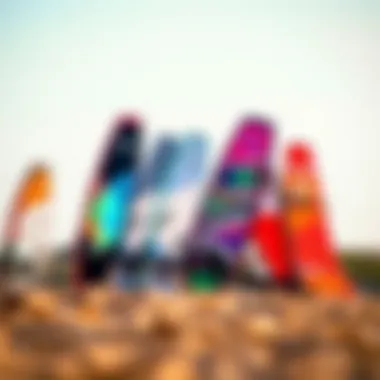
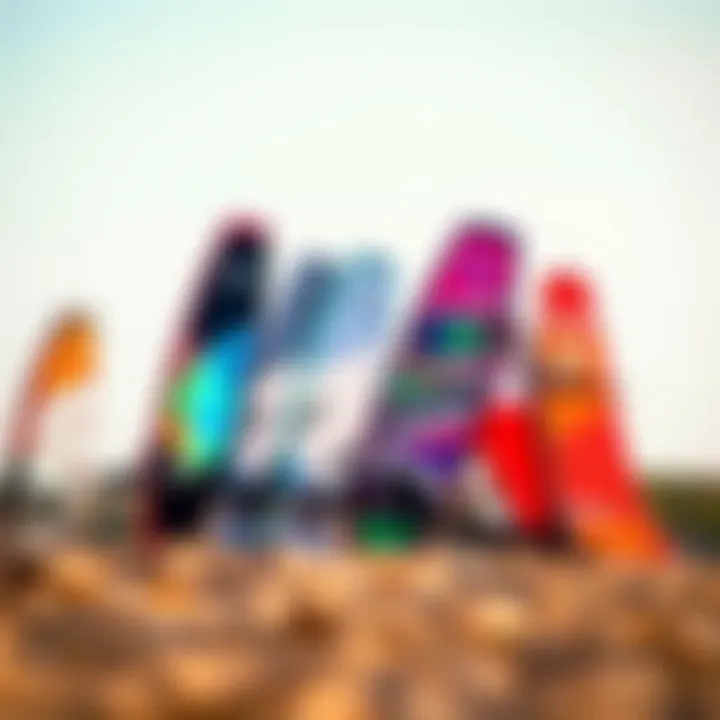
Design Overview
Board C features a hybrid design that merges performance with adaptability. It’s designed for versatility, accommodating a range of skill levels. The low rocker allows for easy planning, making it a good choice for riders looking to progress rapidly. On the flip side, this design can be less effective in choppy conditions, which might deter some from using it in rougher waters.
User Experience
Many riders highlight the balance that Board C offers, making it ideal for those who want to try a bit of everything, from surfing to cruising. Its adaptability has made it a popular choice for those who often shift between different riding styles. However, some seasoned riders might find it lacks the specialized performance of more dedicated boards.
Price Point
Athletes looking for bang for their buck will appreciate Board C’s price, which positions it as an attractive option for both newcomers and intermediates. While it’s not the cheapest on the market, it strikingly offers a balance of price and performance that appeals to a wide range of riders.
"Choosing the right wing foil board is like finding the perfect partner; it takes time, but it makes all the difference!"
With the range of boards discussed, you’re equipped with insights that will aid in making a well-informed decision. Performance metrics and understanding how each factor plays into your personal riding experience can really help in selecting the right device for your needs.
Comparative Analysis of Leading Brands
In the world of wing foiling, choosing the right board involves a fair bit of due diligence. With many brands vying for attention, understanding what sets each apart is crucial. A comparative analysis not only highlights brand reputations but also brings to light subtle details that can influence performance. As riders, whether novices or pros, assessing the unique features across different brands can steer one towards a board that fits their individual style and needs.
When considering a wing foil board, it’s essential to evaluate the following elements:
- Reputation: A brand’s history speaks volumes about its commitment to quality.
- Innovative Features: New technologies and designs can significantly enhance performance.
- User-Centric Design: Boards created with the rider’s experience in mind often offer the best usability.
Ultimately, a thorough grasp of these brand comparisons makes the decision-making process smoother and more informed.
Brand A: Reputation and Quality
Brand A has carved out a strong reputation in the wind sports community. Their commitment to using high-quality materials is unmatched. Riders have consistently praised them for the robustness of their boards. You might find that the boards from this brand display a seamless blend of durability and performance, which is often a significant deciding factor when looking for longevity in the gear.
Moreover, their boards’ craftsmanship is noteworthy. Many riders have reported that these boards feel responsive while riding the waves, enhancing the overall experience. The brand's dedication to quality assurance ensures that every board undergoes rigorous testing before reaching the hands of consumers. Positive user reviews often echo satisfaction with the consistent performance of these boards, reinforcing why Brand A holds a respected spot in the market.
Brand B: Innovative Features
Brand B has made headlines with its cutting-edge designs that incorporate modern technology into the art of wing foiling. They are often on the forefront of advancements in materials and construction techniques. One notable innovation is their use of lightweight composites that maintain strength while shedding unnecessary weight.
Furthermore, the boards often come equipped with specific features, such as adjustable fin systems, allowing riders to customize their experience based on changing conditions. Riders have reported that these enhancements lead to improved stability and maneuverability.
The prospect of owning a board that incorporates these innovative features often translates to a more enjoyable time on the water. As such, Brand B appeals greatly to those who seek an edge in performance while riding.
Brand C: User-Centric Designs
Brand C brings a unique approach to the table, focusing heavily on user-centric designs. They cater to the specific needs of riders by involving communities in their design process. This connection to the rider is reflected in the thoughtful features that are integrated into their boards.
Many users commend this brand for considering factors such as comfort and ease of use. For instance, they often implement ergonomic handles and non-slip surfaces that enhance the rider's comfort, especially during long sessions. Additionally, their boards are known for improving learning curves, making it easier for newcomers to get comfortable with wing foiling.
This commitment to reflecting the needs and preferences of riders in their designs attracts a loyal customer base. The relationship between Brand C and its consumers appears robust, emphasizing that when treated as collaborators, the resulting product tends to resonate more with its audience.
Factors to Consider When Choosing a Wing Foil Board
Choosing the right wing foil board is pivotal for both performance and enjoyment on the water. Whether you are a novice eager to learn the ropes or an experienced rider fine-tuning your craft, understanding these influential factors can make or break your experience.
Skill Level
Your skill level fundamentally impacts the type of board that suits you best.
- Beginners often benefit from boards that are wider and offer more volume. This design provides stability and makes it easier to catch air and ride smoothly. A board like the Naish S26 Wing Foil Board, which has a stable outline, could work wonders for someone just starting out.
- Intermediate riders might start looking for boards that enhance performance, focusing on maneuverability and speed. They could choose something like the Fanatic Sky Wing, which balances stability and agility.
- Advanced riders, on the other hand, typically prefer boards that are light and responsive. Here, they might lean towards options like the Slingshot Hover Glide, designed for high-speed sessions and advanced tricks.
Finding a board that matches your growth can help accelerate your riding capabilities while ensuring that you are comfortable in diverse conditions.
Riding Conditions
Your choice of board should also take into account the specific conditions in which you plan to glide.
- Flatwater: If you're mostly riding on calm waters, a less buoyant, thinner board may be appropriate. Boards like the Duotone Echo can slice through water with ease, providing a great experience with minimal drag.
- Choppy Water: If you expect to tackle choppy or rough conditions, a board that has more volume and width will be advantageous. It will provide stability and confidence when the wind picks up. Trying options such as the JP Australia Hydro Foil Board may work well in those circumstances.
- Wave Riding: For those adventurous souls who wish to take their wings out in the surf, a board designed specifically for wave riding can enhance performance significantly. Look for hybrid designs that allow both foiling and traditional surfing, like the CrazyFly Shifty.
Budget Constraints
Not everyone has an open wallet; thus, understanding your budget when selecting a board is crucial.
- Entry-Level Boards: These generally range from $700 to $1200 and provide the basic features that a beginner needs. Options like the Ozone Wasp provide great functionality without breaking the bank.
- Mid-Range Boards: These boards typically range from $1300 to $2000, and offer better materials and performance features. The Liquid Force Foil Board stands out in this category with its reliable build and performance.
- High-End Boards: If you’re well-versed and willing to invest, high-end boards can exceed $2000. They provide top-notch materials and innovations, favoring competitive use. Look at boards like the AFS Windfoil 126, which is made for serious high performance.
Considering your budget is essential; it prevents you from overspending while ensuring you get value for your investment.
Remember, the right board can elevate your riding experience and lead to faster progress, whether you're just starting or have been foiling for years.
Maintenance and Care for Wing Foil Boards
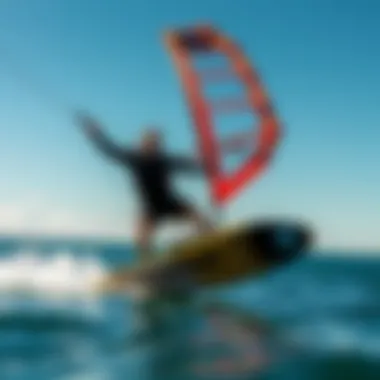
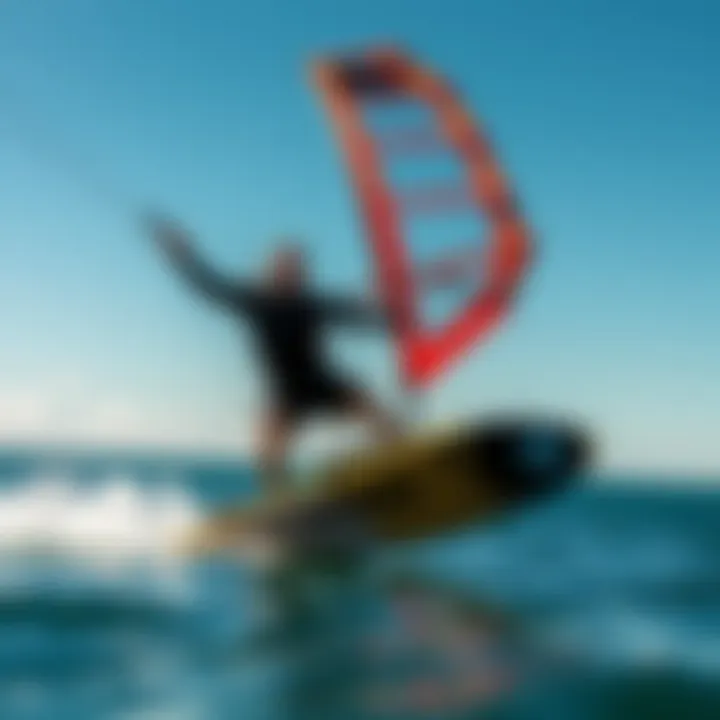
Maintaining your wing foil board is akin to nurturing a prized possession. Just like a fine wine needs proper storage and attention to taste its best, your board requires diligence and care to perform optimally over time. Investing in a wing foil board is no small feat, and being process-oriented about its upkeep ensures that your financial outlay translates into lasting enjoyment and performance.
Caring for your board is more than just preventing wear and tear; it encompasses guarding against the elements, enhancing overall safety, and maximizing performance on the water. When you treat your board with respect, it rewards you through longevity and enhanced performance, making for smoother rides and more thrilling adventures.
Cleaning Guidelines
The first step in giving your wing foil board the care it deserves lies in regular cleaning. Dirt, salt, and grime can accumulate after just a few sessions on the water. Ignoring this can lead to degradation of both the board’s surface and its components, leading to compromised performance and aesthetics. Here are some areas to keep in mind:
- Freshwater Rinse: After every use, particularly in salty water, rinse your board with fresh water. A gentle spray is often enough to clear away any residue that may sit on the surface.
- Mild Soapsare Key: If your board is particularly dirty, a mild soap solution applied with a non-abrasive sponge can help remove stubborn stains. Just be sure to rinse thoroughly afterward to avoid any soap residue.
- Inspect for Damage: Cleaning is also an excellent time to look for scratches, chips, or cracks. Early detection can prevent bigger issues down the road. If you see something amiss, consider making repairs before your next outing.
"Regular cleaning can save you from unexpected repairs down the road and ensure your board stays looking new for longer."
Storage Recommendations
Once you’ve put in the work to keep your wing foil board clean, how you store it is equally important. Proper storage can prevent damage and ensure that your board is always ready when you are. Here are some recommendations for best practices:
- Avoid Direct Sunlight: When not in use, store your board indoors or in a shady area. Ultraviolet rays can compromise the integrity of the materials, leading to fading and weaker structural elements.
- Use a Board Bag: Investing in a quality board bag can provide an extra layer of protection. This can help guard against dings, environmental pollutants, and other risks that come with storing gear outdoors.
- Keep It Flat: Store your board flat, if possible, rather than on its edge. This helps preserve its shape and prevents warping over time. If you’ve got multiple boards, consider stacking them carefully to maximize space without damaging each one.
- Check and Prep: Before long-term storage, check the inflation level of any internal foils and ensure that they’re not overinflated or deflated. This can help maintain optimal performance when you’re ready to hit the water again.
By following these straightforward maintenance and care suggestions, you will not only extend your board's lifespan but also contribute to an overall enriching experience on the water. Integrated with your knowledge of board selection and performance metrics, this primary attention to care will elevate any session you embark on.
Future Trends in Wing Foiling
As the activity of wing foiling continues to gain traction, understanding future trends becomes essential for riders, manufacturers, and enthusiasts alike. This section delves into what is on the horizon for wing foiling, reflecting the innovations and developments that could reshape the riding experience.
Increased Adoption of Eco-Friendly Materials
Today's riders are becoming more conscious of their environmental impact. Sustainability plays a crucial role in decision-making, pushing brands to explore eco-friendly materials. Boards made from renewable resources or recycled plastics are likely to emerge, reducing waste while maintaining performance. This trend not only appeals to environmentally conscious individuals but also sets a new standard within the industry for innovation.
Enhanced Board Technology
The technological advances in design and engineering directly impact performance. Smart boards, integrated with sensors to track performance metrics such as speed and altitude, may soon be common. These features could offer real-time feedback to riders, allowing them to fine-tune their skills based on accurate data. Imagine receiving insights on your riding techniques mid-session—this can add a whole new layer to the sport.
Riding has changed dramatically, and keeping pace with technology could be the key to mastering the waves.
Expansion of Board Varieties
Manufacturers are likely to expand their offerings to include boards tailored for specific riding styles and conditions. Whether you prefer cruising in flatter waters or carving through waves, having a range of designs will ensure each rider finds their ideal match. Expect boards engineered for various skill levels, and they’ll come equipped with different features promoting ease of use or performance enhancement.
Community Development and Events
The growth of the sport may also foster the establishment of more community events and gatherings. These will serve as platforms for riders to connect, share tips, and learn from one another, spreading awareness around wing foiling. Competitions may become more prominent, providing riders with opportunities to showcase skills and motivate continuous improvement.
Integration of Wing Foiling with Other Water Sports
Collaboration with other water sports will likely enrich the community and expand interest beyond traditional wing foiling. For example, hybrid boards that can switch between kite surfing and wing foiling might emerge. This versatility appeals both to seasoned riders and newcomers seeking diversity in their water sports experience.
Overall, keeping an eye on these future trends helps ensure that riders are not just participating but are also adapting to the evolving landscape of wing foiling. Navigating these shifts is crucial, allowing enthusiasts to enhance their experience and remain engaged in an ever-progressing sport.
By recognizing these evolving trends, riders can align their choices with the future of wing foiling, contributing to a vibrant and innovative community.
Epilogue: Making an Informed Decision on Wing Foil Boards
In the world of wing foiling, selecting the right board can transform not only your performance but also your overall enjoyment of the sport. As we’ve explored various aspects throughout this article, it is clear that making an informed decision requires a blend of understanding personal needs and recognizing the trends and characteristics inherent in different boards.
Importance of Personal Fit
Understanding your skill level, preferred riding conditions, and other preferences, like optimal budget, can pave the way for a more tailored experience. For a beginner, perhaps a wider board with a bit more volume will provide better stability. In contrast, experienced riders might lean toward a more performance-oriented design that offers speed and maneuverability, even if it sacrifices some stability in challenging conditions.
Key Considerations
Here are several important factors to keep in mind as you consider your options:
- Skill Level: Choose a board that matches your expertise. Newer riders should focus on boards that offer stability and ease of use.
- Riding Conditions: Some boards perform best in choppy waters while others shine in smooth conditions. Know where you plan to ride most.
- Material Quality: The durability and performance of your board can vary significantly based on its materials. Invest in quality to ensure longevity.
“Choosing the right gear is half the battle; the other half is how you adapt and grow with it.”
Performance Insights
Looking at performance metrics, while brands may advertise specific features designed for speed or tricks, remember that your board should ultimately enhance your experience on the water. Make it a point to test boards where possible prior to making any purchases—you might be surprised which one feels right under your feet.
Budgeting Wisely
As the saying goes, you often get what you pay for. However, that doesn't mean you have to break the bank to find a suitable option. Many reputable brands combine quality with affordability, allowing both beginner and seasoned riders to find a board that won't leave their wallet empty.
Additional Resources for Riders
When diving into the exhilarating world of wing foiling, having the right board is just one part of the puzzle. The journey doesn’t stop there; it extends into communities and enriching learning opportunities that can significantly enhance your experience. In this section, we will explore vital resources that every wing foiler should consider to elevate their skills and knowledge.
Online Communities
The significance of online communities in the wing foiling realm cannot be overstated. Engaging with fellow enthusiasts through forums, social media groups, and dedicated platforms allows riders to share experiences, tips, and insights. Participating in these communities helps one stay updated on the latest trends, gear innovations, and riding techniques. It’s a goldmine of information where new riders can ask questions without hesitation, and seasoned veterans can share wisdom.
- Social Media Platforms: Groups on Facebook and photo-sharing sites, like Instagram, enable riders to showcase their skills, and get feedback on techniques.
- Forums: Spaces like Reddit feature specific subreddits (for instance, /r/wingfoiling) where discussions range from gear reviews to travel destinations suited for wing foiling.
- Local and Global Events: These communities often organize meetups or competitions, where riders can connect in person, build friendships, and enhance their riding through shared experiences.
"Joining a community is like adding wind to your wings. It propels you further in your journey of exploration and excitement in wing foiling."
Courses and Training
Taking formal courses and seeking training are pivotal for those wanting to develop their skills comprehensively. These programs not only provide structured learning but also aid in mastering safety protocols, technical riding skills, and understanding the equipment fully.
- Local Schools and Instructors: Many coastal areas offer courses tailored for all skill levels, from beginners to advanced riders. Instructors provide guidance on everything from body posture to foot placement, offering a hands-on approach that’s often more beneficial than self-taught methods.
- Online Tutorials and Workshops: For those unable to attend in-person courses, various online platforms offer insightful tutorials and workshops. Websites dedicated to water sports can have video demonstrations and instructional articles that cater to visual learners.
- Skill Progression: Taking a course means you have a clear pathway for improvement, helping you to track your progress as you tackle increasingly complex skills.
By tapping into these resources, riders can gain knowledge, skills, and camaraderie with others who share the same passion. In wing foiling, continuing to learn from various sources makes the journey not just enjoyable but also safe and fulfilling.















